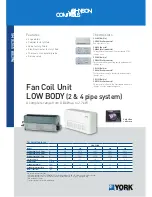
Guideline
Explanation
Make sure that the hold-down bolts for the driver are loose before
you make alignment corrections.
This makes it possible to move the driver when
you make alignment corrections.
Check the alignment again after any mechanical adjustments.
This corrects any misalignments that an adjust-
ment may have caused.
4.4.4 Attach the dial indicators for alignment
You must have two dial indicators in order to complete this procedure.
1.
Attach two dial indicators on the pump coupling half (X):
a) Attach one indicator (P) so that the indicator rod comes into contact with the perimeter of the
driver coupling half (Y).
This indicator is used to measure parallel misalignment.
b) Attach the other indicator (A) so that the indicator rod comes into contact with the inner end of
the driver coupling half.
This indicator is used to measure angular misalignment.
P
A
Y
X
Figure 13: Dial indicator attachment
2.
Rotate the pump coupling half (X) in order to check that the indicators are in contact with the driver
coupling half (Y) but do not bottom out.
3.
Adjust the indicators if necessary.
4.4.5 Pump-to-driver alignment instructions
4.4.5.1 Perform angular alignment for a vertical correction
1.
Set the angular alignment indicator to zero at the top-center position (12 o’clock) of the driver cou-
pling half (Y).
2.
Rotate the indicator to the bottom-center position (6 o’clock).
3.
Record the indicator reading.
When the
reading val-
ue is...
Then...
Negative
The coupling halves are farther apart at the bottom than at the top. Perform one of
these steps:
•
Add shims in order to raise the feet of the driver at the shaft end.
•
Remove shims in order to lower the feet of the driver at the other end.
4.4 Pump-to-driver alignment
30
Model 3700i API610 / Type OH2 Installation, Operation, and Maintenance Manual
















































